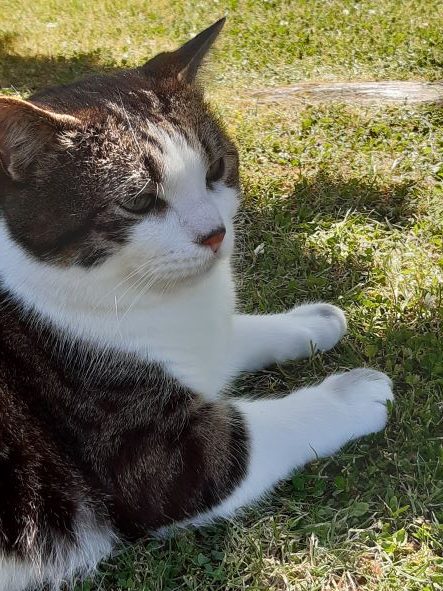This is pretty groundbreaking, are you ready? Researchers have linked repeated exposure to hurricanes, to adverse psychological symptoms:
Findings, published online today in JAMA Network Open, are critical for understanding the psychological impacts of recurring natural disasters, particularly in the context of the escalating threat of climate change. Rather than individuals becoming acclimated to repeated exposure to disasters, results demonstrated that over time, responses to subsequent hurricanes become more negative.
“We show that people are not likely to habituate, or get used to, climate-related natural disasters that will increase in frequency and severity in the years to come. Our results suggest a potential mental health crisis associated with those who themselves directly experienced the storm or knew someone who did, as well as those who spent several hours engaged with media about the hurricane,” said Dana Rose Garfin, UCI assistant adjunct professor of nursing and public health, and first author of the report.
That matches with everything I’ve learned about trauma – it doesn’t “toughen” or “strengthen” us, it wounds us internally, and unless we can take the time to heal, that wound will keep getting worse. Again, it feels like this should be obvious. We’ve all had times when the hits start coming and they don’t stop coming, and it absolutely sucks. We don’t get stronger, we get closer to a complete breakdown. We start lashing out at people, or isolating ourselves, or any number of other things in a mostly subconscious effort to make the bad feelings stop. Trauma doesn’t make us more resilient against trauma any more than stab wounds make us any more resilient against knives.
The first-of-its-kind longitudinal study was conducted by Garfin and her colleagues, Roxane Cohen Silver, Distinguished Professor of psychological science, medicine and health; E. Alison Holman, professor of nursing, both from UCI and principal investigators of the research; Rebecca Thompson, Ph.D., UCI postdoctoral scholar in psychological science; and Gabrielle Wong-Parodi, Ph.D., assistant earth system science professor, and center fellow at the Woods Institute for the Environment, Stanford University. The team assessed Florida residents in the hours before Hurricane Irma made landfall and examined those same individuals again following Hurricanes Irma and Michael to detect any mental health changes that might have occurred over time. Both were Category 5 storms that hit in succession – Hurricane Irma in September 2017 and Hurricane Michael in October 2018.
The team found that repeated exposure to the threat of catastrophic hurricanes was linked to symptoms of post-traumatic stress, depression, anxiety and ongoing fear and worry. In turn, these psychological symptoms were associated with greater social- and work-related impairment, including difficulty interacting with others, and performing work tasks and other daily activities.
“Some distress is normal following traumatic and extremely stressful events,” Garfin said. “Most people will recover and display resilience over time. However, as climate-related catastrophic hurricanes and other natural disasters such as wildfires and heat waves escalate, this natural healing process may be disrupted by repeated threat exposure. Moreover, we followed people longitudinally over two hurricane seasons, and our data show that as people experience multiple occurrences over time, psychological symptoms accumulate and intensify, potentially portending a mental health crisis.”
We need time to heal. To go back to the knife analogy, it makes sense that being stabbed and surviving it would make it easier to cope with being stabbed again in the future. But if you’re stabbed on a regular basis? If you’re stabbed just after you get out of the hospital from the last stabbing?
Your brain will be focused entirely on avoiding more stabbing, because you can’t heal if you’re still getting stabbed.
We need time to heal.
Sometimes I feel like “research with entirely expected results” is its own category. When studies like this come out, I usually see reactions ranging from “yeah, no duh” to “I can’t believe somebody wasted money researching something so obvious”. It shouldn’t be surprising to anyone that regular major disruptions in life aren’t great for one’s mental wellbeing, especially when those come with things like personal danger and property damage. Do we really need research to tell us something so obvious? I get it. Sometimes I feel that way too.
Then I think about what I’ve seen, and I realize that we’re in our current climate crisis because there is no end to what some people will lie about to suit their aims. They will claim that weedkiller is safe to drink. They will claim that people whose homes are being consumed by the sea can just sell them. They will claim that society’s problems are all being caused by those with the least amount of power.
Of course they will claim that nothing needs to be done about the mental health impact of climate change and the disasters it spawns. So of course we will need to have research like this to point to, for those mysterious folks among us who somehow think it’s plausible that people will just get used to hurricanes.
If you like the content of this blog, please share it around. If you like the blog and you have the means, please consider joining my lovely patrons in paying for the work that goes into it. Due to my immigration status, I’m currently prohibited from conventional wage labor, so for the next couple years at least this is going to be my only source of income. You can sign up for as little as $1 per month (though more is obviously welcome), to help us make ends meet – every little bit counts!

